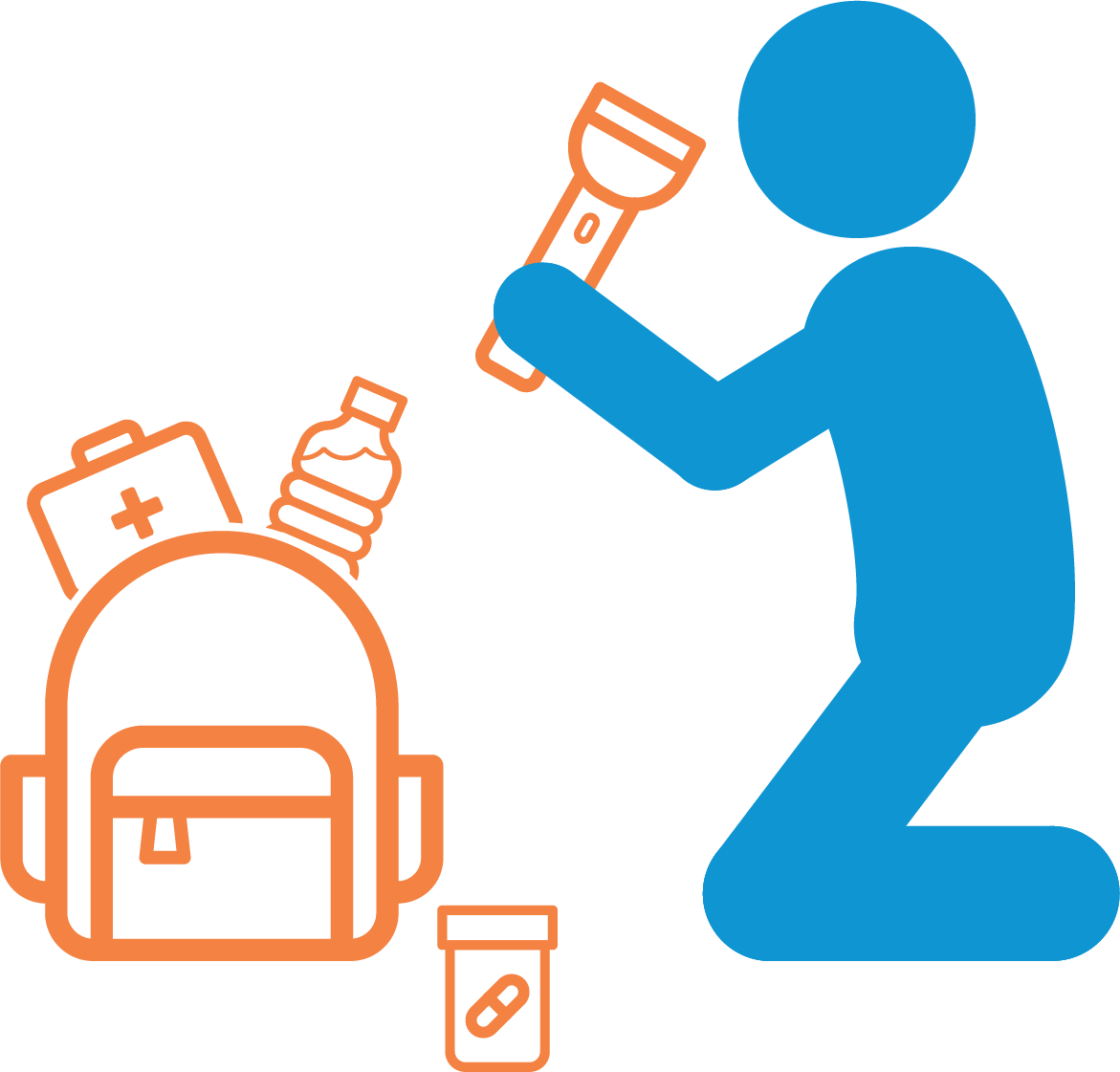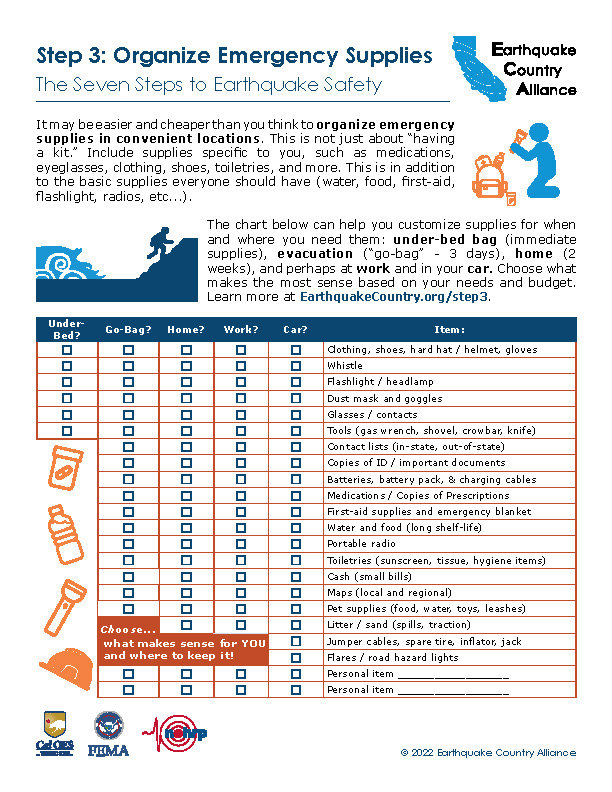Organize Emergency Supplies in convenient locations.

ECA’s Step 3 Webinar reviews how to Organize Emergency Supplies (Click “CC” for captions)
Learn about our Safer At Home Webinar Series
Everyone should have emergency supplies stored in accessible locations at home, at work, and in vehicles. Having emergency supplies readily available can reduce the impact of an earthquake or other emergency on you and your family.
You can choose what to put in each location:
- Under-Bed Bags hold shoes, a flashlight, and other items for when an earthquake happens while sleeping.
- Go-Bags or car kits contain supplies for about 3 days for when evacuation is needed.
- Home or work supplies are for sheltering in place for up to to 2 weeks or for larger groups.
The lists below include the items you can choose to include in each location.
Under-Bed Bags
While the other emergency supplies below are for nearly any emergency, “Under-Bed Bags” are just in case of earthquakes, especially when people are sleeping. Items that you leave next to your bed (including shoes and glasses) will be scattered during earthquakes and possibly covered with fallen items or under your bed. Shoes may also be filled with broken glass. So it’s a good idea to have these items within a closed bag, attached to each bed:
Essential:
|
Optional:
|
Go-Bags and Car Kits
Everyone should have a personal emergency supplies “Go-Bag” to take if evacuation is necessary. These can be for an individual, family, or small group, with contents to last for about 3 days. You can also keep these supplies in a car. These items are recommended:
|
|
Use our Step 3: Organize Emergency Supplies checklist
to choose what to store in each location

Household and Workplace Supplies
Electrical, water, transportation, and other vital systems can be disrupted for several days or much longer in some places after a large earthquake. Emergency response agencies and hospitals could be overwhelmed and unable to provide you with immediate assistance. Providing first aid and having supplies will save lives, will make life more comfortable, and will help you cope after the next earthquake.
In addition to your personal emergency supplies kits, store household or workplace emergency supplies in an easily accessible location (in a large watertight container that can be easily moved), with a supply of the following items to last at least 3 days and ideally for 2 weeks:
|
|
Use and replace perishable items like water, food, medications and batteries on a yearly basis.




